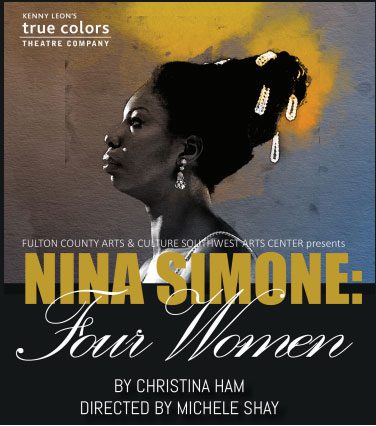Elevate S.W.A.T.S (Image Source: City of Atlanta Bureau of Cultural Affairs)
Nina Simone was one of the most influential figures in rhythm and blues music during the 1960s and 1970s. Born in Tryon, North Carolina in 1933, her musical career spanned over 30 years until her death in 2003. She began playing classical music on the piano at a young age, later transitioning to jazz and pop music. Her unique style captivated audiences around the world and she quickly became one of the leading voices of rhythm and blues music.
In addition to her success as a musician, Nina Simone was also an advocate for civil rights throughout her career. She used her platform as an artist to speak out against injustice and inequality, writing songs such as “Mississippi Goddam” and “To Be Young Gifted and Black” which served as anthems for the civil rights movement. Her activism defined not only her own legacy but that of others who followed in her footsteps.
In order to better understand the impact of Nina Simone’s career on rhythm and blues music, it is helpful to examine other artists who were influenced by her work during the same period. Marvin Gaye is widely regarded as one of the most important soul singers of all time, thanks largely to his distinctive sound which combines elements of gospel, funk, and jazz. His 1971 album What’s Going On is often cited as a landmark example of socially conscious rhythm and blues music inspired by Simone’s influence.
Another standout artist from this era is Curtis Mayfield, best known for his work with The Impressions during the 60s. His songwriting style heavily reflected Simone’s influence while adding a unique funk-inspired twist that would later become a cornerstone of modern R&B production techniques. He continued to explore social issues through his solo work such as Superfly (1972) before earning widespread recognition with his 1974 record “Roots.”
Otis Redding is another key figure in R&B history who helped define soul music during its golden era with hits like “(Sitting On) The Dock of the Bay” (1968). His passionate singing style drew heavily from gospel influences which he combined with elements from Nina Simone’s distinct vocal approach for an unparalleled sound that has gone on to inspire generations of musicians since his untimely death in 1967 at age 26.
The last two major figures to mention are Stevie Wonder and Aretha Franklin – both icons whose careers flourished after being heavily influenced by Nina Simone’s unique brand of soulful R&B songwriting during their formative years as performers. Wonder released several acclaimed albums throughout the 70s including Songs in The Key Of Life (1976), earning him worldwide fame while continuing to champion civil rights causes via his lyrics just like his mentor once had done before him. Aretha Franklin meanwhile proved herself as one of the greatest vocalists ever with unforgettable records like “Respect” (1967) while exploring various genres such as jazz, gospel and even opera over time due largely to Simone’s lead prior on this path.
Throughout her illustrious career spanning several decades, Nina Simone broke down barriers within both rhythm & blues music as well as civil rights activism with conviction and determination that changed popular culture forever – inspiring many classic acts throughout 1964-75 such Marvin Gaye, Curtis Mayfield, Otis Redding, Stevie Wonder, and Aretha Franklin. Her timeless legacy lives on today more than ever before proving how powerful art can be when shaped around meaningful messages about life and truth.



